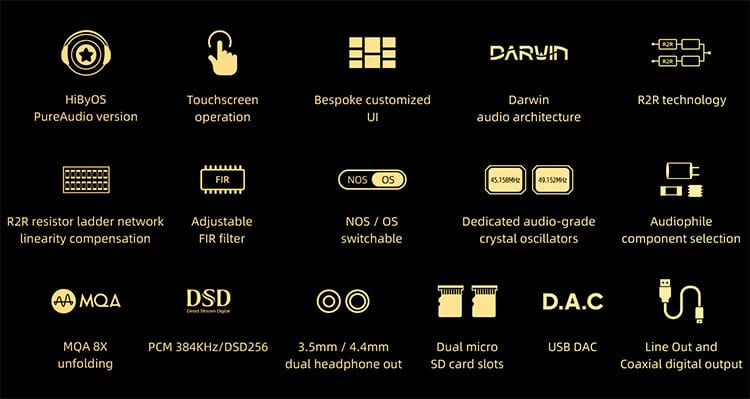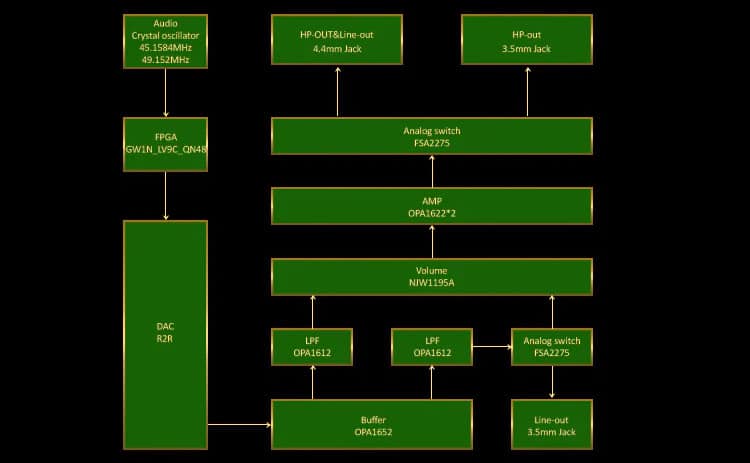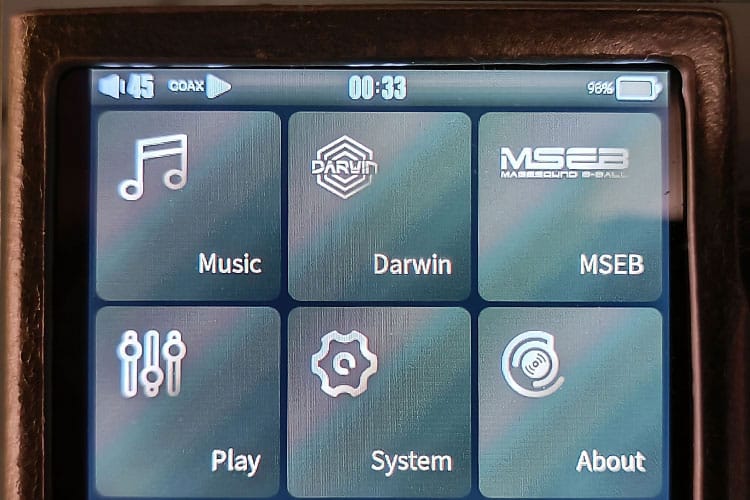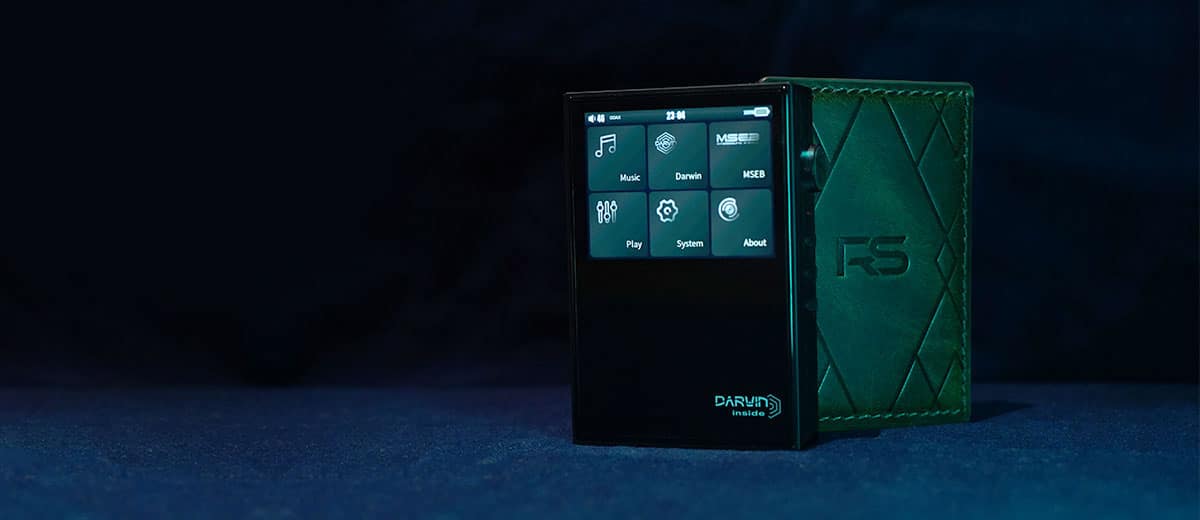For today’s article, we review the new HiBy RS2 which is an entry-level R2R DAP featuring the company’s proprietary Darwin architecture. It is priced at $479.
Disclaimer: This is a sample sent to us in exchange for our honest opinion. Headfonics is an independent website with no affiliate links. We thank HiBy Music for this opportunity.
You can click here to learn more about HiBy products that we have previously covered on our website.
Note, that this feature follows our latest scoring guidelines which you can read here.
Back in late 2020, HiBy launched the original R2 which was the most affordable DAP option in their extensive lineup and a continuation of their popular micro form factor first seen on the R3 Series.
Well, they are back now with the RS2 but for those thinking it’s a tweak of the original R2 then think again.
This is a totally different proposition incorporating a lot of HiBy’s latest developments including their innovative Darwin Architecture that debuted on the RS6. It is also an R2R DAP and possibly the cheapest one in the market today at $479.

Tech Highlights
Darwin Architecture
Drawn from the Darwin Architecture first seen on the RS6, the diminutive RS2 is packed full of features normally seen on higher-end DAPs. Given the R2R discrete engineering approach, that means the features are all controllable in-house rather than bought off the shelf with a mix of software and hardware tweaks.
This includes linearity compensation for the R2R array, a 256-tap adjustable FIR filter, a harmonic controller, as well as NOS and OS options, and the ability to oversample at a 16X rate when required.
HiBy OS
The RS2 rides on HiBy’s customized PureAudio version HiBy OS and enjoys a “cleaner” audio pathway on the system level, compared to Android which requires SRC bypass and components to support wireless functions.
I consider the simplified configuration on the RS2 to be a smart move when there are more power constraints. In this case, a lightweight OS would allow better allocation of power and by not including some wireless functions more space, power can be saved as well as reducing noise from the corresponding components.
Decoding
For codecs, the RS2 supports up to 32BIT/PCM384kHz, MQA 8X, and DSD256 decoding. Two microSD card slots can be spotted at the bottom and the device can also read from OTG storage devices.
In addition, the RS2 can be used like a dongle and it has a dedicated non-charging mode switch that allows the RS2 to run on its own power and isolates interferences from the source.

Amplification
In the amplifying circuitry, the OPA1652 runs on current amping mode to step up the current, and dual OPA1612 acts as LPF. Dual OPA1622 with 4 channels handles the amplification and a New Japan Radio NJW1195A chipset is used for precise steps of volume.
The configuration has a clear mission to jack up the dynamics and control whilst at the same time, maximizing portability. To that end, HiBy has achieved 10 hours of continuous playback on a 3500mAh battery that is satisfactorily long.
Performance Numbers
The 4.4mm PO with 32Ω load outputs as much as 320mW with a 3.2Vrms swing. On 3.5mm PO @32Ω, the RS2 can output as much as 125mW and 2Vrms, meaning that the RS2 has decent power on its balanced output and not so much for SE.
The SNR measures 118dB on 3.5mm out and 117dB on balanced, with 0.006% THD+N performance, which is decent for its size.
On another note, the design works well with sensitive IEMs as the output impedance is as low as 0.9Ω on balanced and 0.47Ω on 3.5mm output, being such the RS2 is technically efficient with IEMs that have a low impedance rating.
Design
The RS2 measures just 158g and has a 2.45 Inch, 480*360pixel screen. The front and back sides of the RS2 are fitted with glass panels and the body is shaped masculinely similar to the design of the R6 and RS6. The volume knob is decorated with a faceted glass insert.
When you put on the leather case the area is cut out to display the whole front panel including the Darwin badge. It looks pretty cool but is also quite practical allowing the thumb to swipe to the bottom of the screen area without being blocked.
It would be sweeter if the screen covers the whole body but considering the bigger components and power consumption, slimming down the screen may not be a bad idea.
Looking closely, the aluminum alloy framework on the RS2 has a brushed pattern. On the right side, you will find control buttons, as well as an indicator, led in a bar shape common to other RS series devices, consistent with the button design to look sporty.
There is also an unusual feature as hinted above. The on/off switch on top can be slid to the left side when users decide to not use the power from the host when pairing the RS2 to USB sources as a DAC. This will reduce battery consumption on the phones and isolate the RS2 from noises that come from the source.
Inevitably the design has a sense of déjà vu from the Astell & Kern AK120 released many years ago, which has a similar screen-to-body ratio and dual SD card slots. Except that the RS2 is much richer in software features and much more capable in the sound department which we will cover below.
I/O
The RS2 supports both 3.5mm and 4.4mm output, as well as a 3.5mm lineout to connect to amplifiers. It can also support USB decoding, and double as a USB audio source for other decoders.
If you are using a full-size decoder, you may consider using the RS2’s coaxial output and finally, the RS2 can also function as a transport.
Controls
The RS2 has a very simple UI that supports simple gesture control, users can click to enter menus and swipe to the right to return to the last page.
A few physical buttons on the sides allow common music playback controls including stop/play, next/last songs, and fast forward/backward.
The response speed is satisfactory fast even when playing back a DSD file. When swiping fast it won’t freeze and the menu structure is well planned so that you can get actions done within a few clicks.
Packaging & Accessories
HiBy has gotten really good at designing the whole package and the open-box experience for RS2 is delightful.
Inside the packaging, there is a Darwin Brooch Pin and it comes with a well-crafted leather case in a green theme that is consistent with the packaging. In addition, there is a USB Type-C to Coaxial cable for those who want to use the RS2 as a transport

Software
To accommodate and maximize the performance with the R2R components under the cigarette box size design constraints, HiBy is trimming down quite some OS functions and uses its in-house HiBy OS PureAudio version, powered by the fairly old X1000E Ingenic controller.
The menu layout on the RS2 is cleanly arranged to allow instant access to the system-wide effective MSEB and Darwin filter settings from the menu screen. Besides that, there are user-friendly features like customizable theme colors in the setting function.
Overall, the UI response is smooth as long as you keep playlists short. Normal operation can be handled single-handedly at ease and equalizing options are responsive. Despite the small screen size, the straightforward layout design and physical buttons are adequate for fast and effective navigation.

Features
The MSEB tuning panel on the RS2 is a killer feature and one of the most advanced, user-friendly implementations among the competition.
I highly recommend it to those who love to experiment with their own tweaks. This function can stretch the synergy much further with any IEMs, fixing obvious flaws and coloration completely different from the stock tuning in different aspects such as the timbre, bass impact speed, and vocal sweetness.
The MSEB function comes in handy and the distortion level is pretty low even when you drag the bar to the far right or left. Users can also access the 256-tap, adjustable FPGA-powered FIR filter capable of 16x Oversampling which allows matching with IEMs of different characteristics and response speeds.
Same as the RS6 there are a total of 10 Darwin digital filters, a toggle for NOS/OS, and a Harmonic Controller Slider with values ranging from 0-255. This allows users to control the overtones for more smoothness.

Media Management
The RS2 can read multi-lingual tags without errors and scan songs pretty fast, it takes only a short while before I realized that the RS2 has already scanned my 512GB TF card.
When pressing and holding on to the songs displayed users can access options that allow selecting multiple songs to be added to a playlist, or to delete the file. However, there is no copy function that allows the user to move the song to another folder.
Wired Connectivity
You will need to enable USB DAC mode in the settings as the default connection will be for storage only. The RS2 connects instantly when plugged into my Windows 11 PC with no driver required
Connecting to other USB outputs via OTG is as easy as hooking it up to a laptop. If you don’t want to drain your phone you could always slide the power button to the left side, which will force the RS2 to use its own battery on board instead of draining the power on the host machine.
With sensitive IEMs you may hear some difference in noise level as well as the dynamics being affected.
Sound Impressions
The usual treatment which is more than 2 weeks of continuous burn-in is given to the RS2 to warm up the resistors inside before impressions are put down. If you are familiar with R2R devices you may have an idea of what to expect in terms of tonality and presentation, but there is always something more to expect with the RS2.
Despite being an entry-mid-level device, RS2 is very capable in the sound tweaking department. That does not suggest that the base tuning is not pleasant. Instead, it has a rather neutral and smooth tuning, that could be a good start for a user to build their custom sound profile.
Typical R2R sound might limit pairing feasibilities but the DARWIN architecture and MSEB digital sound processing expand the synergy with different IEMs, introducing stronger dynamics and strengthening the transients and staging performance.
Timbre
After 2 weeks of burn-in, the RS2 sounds very smooth with full and soothing low-end with a bass response that can be detected below 40-50Hz on the test IEMS.
The mids are punchy and dense, meaty but sufficiently textured for a solid image. The upper register isn’t shy but is free from spikes, and it is accompanied by clear transients to boost resolution in the output.
The detail retrieval power is overall satisfactory with an adequate amount of air preserved such that the output doesn’t feel boxed in. A slight top-end roll-off can be detected which puts the spotlight more on the smoothened midrange, coloring the output slightly warm, cozy, and non-intrusive at all times.
Switching to faster and strongly attacking music like EDM, speedy electronic music, or metal, is not to RS2’s advantage. The more mid-centric sound design or organic coloration from the R2R architecture does a better job with sentimental old pop, soothing club music, and airy percussions.
The expressive overtones especially when pushing the Harmonics Controller slightly, make the RS2 pair better with Pop and Jazz when listening via USB output on my laptop. I prefer switching to high gain and non-oversampling for denser, richer mids. On low gain and OS mode, it sounds more forgiving but flatter and intimate in the mids.
Within a controlled degree of DSP tweaks, the transients and impact can feel quite strong on the low end while maintaining a natural and open tuning that is relaxing to listen to. This makes me feel like the RS2 is more capable than its stated power.
Staging & Dynamics
The RS2 is not the most powerful device for the price range, probably due to the higher power requirements of R2R architecture.
Despite this fact, when paired with sensitive IEMs that stress the dynamics and extension, or by using MSEB tweaks, it could still sound fairly detailed and expanded. The RS2 is capable of defining distance, it sounds realistic when instruments pan across the stage rendered or when bass decay into the background.
With IEMs of higher impedance, you may detect a more prominent roll-off in both the bass and treble, which takes away some air as well as sibilance tones.
Separation with instruments is also not as strong as some of its AKM/ESS-based rivals, but in return, harmonics are beautifully rendered and there is good coherence between different elements presented.







